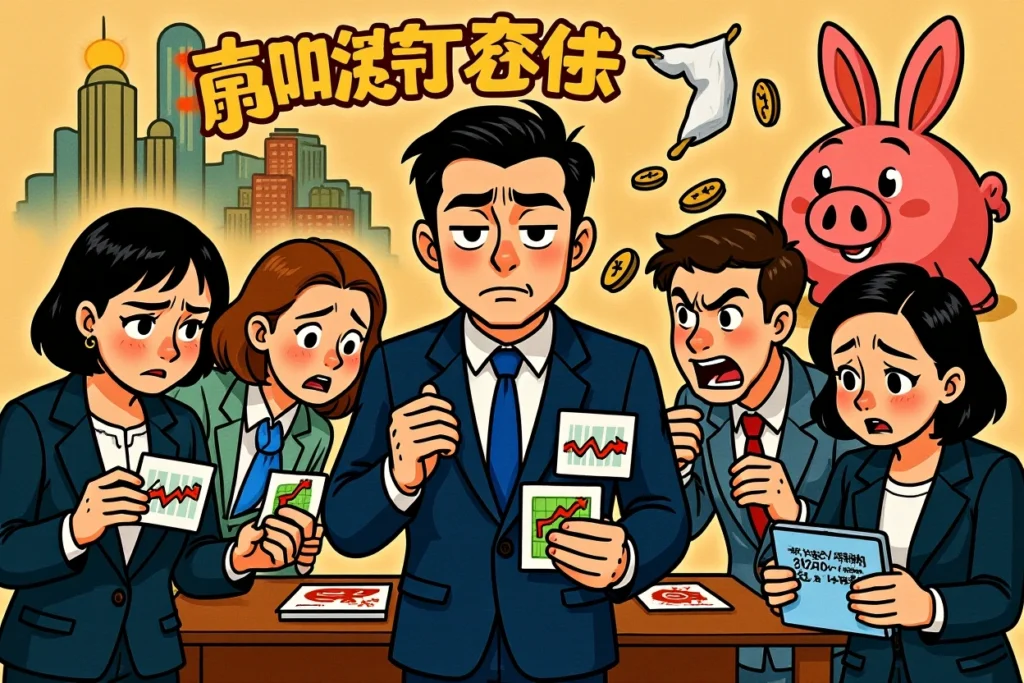This summer, millions of Chinese households experienced shocking electricity bill increases, with many reporting costs exceeding 1,000 yuan monthly. As thermostats battled record-breaking heatwaves, consumers questioned why their bills spiked despite similar appliance usage to previous months. The truth behind soaring electricity bills involves complex pricing structures, climate extremes, and consumption patterns that together created a perfect storm of higher costs.
The Summer of Unprecedented Electricity Demand
China’s power grid faced extraordinary pressure during the 2023 summer season. The State Grid Corporation reported five consecutive record-breaking peaks in electricity demand, culminating in an unprecedented load of 1.233 billion kilowatts between August 4-6. This represented a staggering 53 million kilowatt increase over the previous year’s peak. The soaring electricity bills directly correlate with this surge, as air conditioning units worked overtime against relentless heat.
Record Heatwaves Drive Consumption
According to the China Meteorological Administration, this summer featured the highest average number of high-temperature days in recorded history at 8.5 days nationwide. Six provinces including Shaanxi, Henan, and Sichuan experienced their hottest temperatures ever recorded. In Chongqing, air conditioning alone accounted for over 50% of the 30.16 million kW load peak on August 5. Similarly, Xi’an witnessed a 15.5% year-over-year increase in electricity demand, marking its fourth record-breaking consumption peak this season.
Decoding Tiered Electricity Pricing
Most Chinese provinces employ residential tiered pricing systems that directly contribute to soaring electricity bills during high-consumption months. This policy structure, implemented in provinces including Jiangsu, Sichuan, Beijing, and Shanghai, establishes consumption brackets with progressively higher rates.
How Tiered Pricing Accelerates Costs
Professor Yuan Jiahai (袁家海) from North China Electric Power University explains: “Tiered electricity pricing follows a staircase model where costs rise significantly once consumption exceeds basic living needs. The same appliance usage can cost dramatically more when it pushes households into higher pricing tiers.” For example, a household using 500 kWh monthly might pay:
– Tier 1 (0-240 kWh): 0.50 yuan/kWh = 120 yuan
– Tier 2 (241-400 kWh): 0.55 yuan/kWh = 88 yuan
– Tier 3 (401+ kWh): 0.80 yuan/kWh = 80 yuan
Total: 288 yuan
Identical usage during cooler months might remain entirely within Tier 1 pricing (250 yuan), demonstrating how tiered systems amplify seasonal cost differences.
Monthly vs Annual Tier Systems
Provinces implement tier calculations differently, creating distinct billing patterns:
– Monthly calculation (Hubei, Jiangsu): Higher summer bills when AC usage pushes households into top tiers
– Annual calculation (Shanghai, Beijing): Relatively lower summer bills but higher winter costs as cumulative usage reaches upper tiers
Professor Lin Boqiang (林伯强) from Xiamen University notes: “Monthly tiering creates dramatic summer spikes but stabilizes other seasons. Annual systems smooth costs but create year-end surprises. Both ultimately mean higher costs for high consumers.”
Time-of-Use Pricing Dynamics
Complementing tiered systems, time-of-use (TOU) pricing significantly impacts soaring electricity bills in provinces including Fujian, Anhui, and Shanxi. This mechanism charges different rates based on consumption timing, with distinct peak and off-peak periods.
Peak vs Off-Peak Economics
In Fujian’s TOU system:
– Peak hours (8:00-22:00): +0.03 yuan/kWh over base rate
– Off-peak hours (22:00-8:00): -0.20 yuan/kWh discount
The State Grid Customer Service Center advises: “TOU pricing benefits households shifting substantial consumption to nighttime. If over 13.1% of your usage occurs during off-peak hours, TOU typically saves money.” However, households with inflexible schedules often pay more under TOU systems.
Implementation and Limitations
Residents can enroll in TOU programs through State Grid’s mobile app or service centers, but face restrictions:
– Mandatory 12-month commitment after enrollment
– No mid-year adjustments to pricing structure
– Tiered pricing still applies alongside TOU rates
Why 2023 Bills Reached Historic Highs
Three interconnected factors created unprecedented conditions for soaring electricity bills this summer:
Climate Extremes and Usage Patterns
Extended heatwaves forced continuous air conditioner operation rather than intermittent use. Yuan Jiahai notes: “Indoor-outdoor temperature differentials dramatically impact efficiency. An AC unit working against 35°C heat consumes significantly more energy than at 30°C, even maintaining identical indoor temperatures.” The State Grid Corporation confirms that setting thermostats just 1°C higher can reduce consumption by 6-8%.
Pricing Structure Synergy
The combination of tiered and TOU pricing created compounded costs:
1. Extended AC usage pushed households into higher pricing tiers
2. Daytime cooling demands coincided with peak TOU pricing periods
3. Cooling appliances operated less efficiently during hottest hours
Contrary to popular speculation, no across-the-board rate increases occurred in State Grid’s 26 service provinces.
Managing Future Electricity Costs
Understanding these mechanisms empowers consumers to mitigate soaring electricity bills. Strategic approaches include:
Usage Optimization Techniques
– Set AC thermostats at 26°C instead of lower temperatures
– Use programmable thermostats to reduce cooling when unoccupied
– Seal windows/doors to prevent cool air leakage
– Maintain AC filters monthly for peak efficiency
– Supplement with ceiling fans to reduce AC runtime
Pricing Plan Strategy
– Analyze past bills to determine if TOU pricing would benefit your household
– Shift energy-intensive activities (laundry, dishwashing) to off-peak hours
– Monitor monthly usage to avoid crossing tier thresholds
– Consider energy-efficient appliance replacements
Navigating the New Energy Reality
Soaring electricity bills represent more than seasonal anomalies—they signal fundamental shifts in China’s energy landscape. The tiered pricing system reflects policy efforts to balance residential subsidies funded by commercial users while encouraging conservation. As Professor Yuan explains: “Residential rates remain artificially low compared to actual generation costs. Tiered structures preserve affordability for basic needs while recovering costs from high-consumption luxury usage.”
Looking ahead, consumers should expect greater pricing sophistication as utilities implement dynamic systems responding to real-time grid demands. The State Grid Corporation continues developing smart meter technologies enabling more granular consumption-based pricing. For households, proactive energy management becomes increasingly essential for controlling costs amid changing climate patterns and evolving rate structures.
Review your latest electricity bill to identify which pricing structures apply in your province. Calculate whether shifting usage patterns could reduce your costs, and contact your local utility to explore pricing plan options. Small adjustments today can prevent bill shock tomorrow as China navigates the complex energy challenges of the 21st century.




